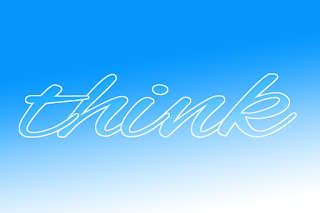The Monthly Mind Tuning: Five Anti-Digital Mindsets Oct. 2016
 The right mind is the foundation with which to build competitive capabilities and drive the right attitude. So the next effective talent management practices should be more structured and focused on digging deeper into mindset level: You need to evaluate how people think, why they think that way, and how they approach problems and solve them. So you can easily and consistently differentiate future high performers from those with a mediocre mindset in your organization. Five Anti-Digital Mindsets Oct. 2016
The right mind is the foundation with which to build competitive capabilities and drive the right attitude. So the next effective talent management practices should be more structured and focused on digging deeper into mindset level: You need to evaluate how people think, why they think that way, and how they approach problems and solve them. So you can easily and consistently differentiate future high performers from those with a mediocre mindset in your organization. Five Anti-Digital Mindsets Oct. 2016A Bureaucratic Thinking? The word "bureaucracy" is often seen in pejorative circumstances. Though, its roots being: bureau(fr) = desk and kratos(gr) = rules/ power, it can embrace different meaning: According to dictionary.com, bureaucratic is “a system of administration based upon organization into bureaus, division of labor, a hierarchy of authority, etc, designed to dispose of a large body of work in a routine manner." From this perspective, it seems the larger the organization and inputs, the larger the amount of 'rules' necessary for its function and to keep dependent variables and outputs delivery stable. At industrial age, most of the organizations are running at silos, with the top down organizational structure, bureaucracy thinking is perhaps understandable, because “command and control” is part of business culture. However, in the digital environment in which organization’s function become more dynamic, the environment changes quicker than the 'speed' with which rules and processes can be changed, does bureaucratic thinking become the intolerable mindset to stop the change and mental barrier to stifle innovation? What makes the difference between bureaucracy and a 'healthy' organization?Group Thinking and Abilene Paradox Group thinking or peer pressure is a term first used in 1972 by social psychologist Irving Janis that refers to a psychological phenomenon in which people strive for consensus within a group. In many cases, people will set aside their own personal beliefs or adopt the opinion of the rest of the group. In an Abilene paradox, a group of people collectively decide on a course of action that is counter to the preferences of many or all of the individuals in the group. You can see it at work when nobody wants to admit that the project is doomed, so they keep working on it, even though each person on the team knows it is futile. Why is it human nature to go along with what we believe the rest of the group wants to do without taking the time to actually check out if we are all taking a trip to Abilene? A Complacency Mind The world is constantly changing, and digital is all about flow. But complacency is at the heart of resistance to change. Where does complacency come from, and how to fix such an anti-digital mindset? A Binary Mind? IThe digital world is nonlinear and ambiguous, also multi-dimensional and colorful. However, many leaders and business professionals still keep the old silo thinking habits at the industrial age, for many of them, people are either good or bad, friend or enemy; things are either right or wrong; win or lose; the state is either blue or red, and the world is either black or white; there are no shades in between. Either you call it “extreme thinking,” “binary thinking,” or “bipolar thinking,” such mind is too rigid in the outlook; too judgmental in managing relationship; too static to sense the change; too silo to think the big picture, and too linear to fit in the non-linear digital world. More specifically, what’re the root causes of such mindset, is it changeable?
 An Excessively “Angry” Mind: It’s normal as humans, we have all sorts of emotions, but how you react to them decides your EQ maturity level. From example, according to American Psychology Association, “Anger is an emotion characterized by antagonism toward someone or something you feel has deliberately done you wrong. Anger can be a good thing. It can give you a way to express negative feelings, or motivate you to find solutions to problems. But excessive anger can cause problems. Increased blood pressure and other physical changes associated with anger make it difficult to think straight and harm your physical and mental health.” The point is what antidote are you using to counteract your angry reaction and your habit to pull the trigger?? The “Future of CIO” Blog has reached 1.5 million page views with about #3100th blog posting in 59+ different categories of leadership, management, strategy, digitalization, change/talent, etc. The content richness is not for its own sake, but to convey the vision and share the wisdom. Blogging is not about writing, but about thinking and innovating the new ideas; it’s not just about WHAT to say, but about WHY to say, and HOW to say it. It reflects the color and shade of your thought patterns, and it indicates the peaks and curves of your thinking waves. Unlike pure entertainment, quality and professional content takes time for digesting, contemplation and engaging, and therefore, it takes time to attract the "hungry minds" and the "deep souls." It’s the journey to amplify diverse voices and deepen digital footprints, and it's the way to harness your innovative spirit.
An Excessively “Angry” Mind: It’s normal as humans, we have all sorts of emotions, but how you react to them decides your EQ maturity level. From example, according to American Psychology Association, “Anger is an emotion characterized by antagonism toward someone or something you feel has deliberately done you wrong. Anger can be a good thing. It can give you a way to express negative feelings, or motivate you to find solutions to problems. But excessive anger can cause problems. Increased blood pressure and other physical changes associated with anger make it difficult to think straight and harm your physical and mental health.” The point is what antidote are you using to counteract your angry reaction and your habit to pull the trigger?? The “Future of CIO” Blog has reached 1.5 million page views with about #3100th blog posting in 59+ different categories of leadership, management, strategy, digitalization, change/talent, etc. The content richness is not for its own sake, but to convey the vision and share the wisdom. Blogging is not about writing, but about thinking and innovating the new ideas; it’s not just about WHAT to say, but about WHY to say, and HOW to say it. It reflects the color and shade of your thought patterns, and it indicates the peaks and curves of your thinking waves. Unlike pure entertainment, quality and professional content takes time for digesting, contemplation and engaging, and therefore, it takes time to attract the "hungry minds" and the "deep souls." It’s the journey to amplify diverse voices and deepen digital footprints, and it's the way to harness your innovative spirit.Follow us at: @Pearl_Zhu
Published on October 29, 2016 23:35
No comments have been added yet.



